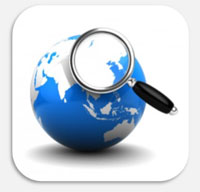¿Cuándo no es pandemia una pandemia?
Debido a que el virus de la influenza A (H1N1) se despliega por todo el mundo, no cabe duda de que estamos ya en las primeras etapas de una pandemia de gripe. No obstante, hay una considerable resistencia a llamarla una pandemia.
El 29 de abril, la Organización Mundial de la Salud (OMS) trasladó su evaluación de amenaza de pandemia a la fase 5 en su escala de 6 puntos, lo que indica que el nuevo virus ha causado “un nivel sostenido de brotes en la comunidad en dos o más países en una región de la OMS”.
Y ahí es donde el nivel de amenaza se ha mantenido desde entonces – un punto por debajo de la condición oficial de pandemia mundial. La actual definición de la fase 6 requiere que exista “un nivel sostenido de brotes en la comunidad en dos o más países en una región de la OMS”. Este criterio es casi seguro que se cumplirá más tarde o más temprano.
Fuente: When is a pandemic not a pandemic? : Nature News. Disponible en: http://www.nature.com/news/2009/090521/full/news.2009.501.html [Accedido Mayo 24, 2009]
“El nivel 6 no significa que nos encontramos ante el fin del mundo”.
Margaret Chan
OMS
Yet this week Margaret Chan, director-general of the WHO, came under pressure from member states — including the United Kingdom and Japan — to move the goalposts to delay or prevent a move to phase 6, by redefining it to include an assessment of the severity of the disease, and not only its geographical spread.
Adding that requirement of severity may sound like common sense. But it is not, because the severity of a pandemic is unpredictable. The flu might fizzle out; or it could go away for months only to come back with a vengeance, creating as much devastation as the 1918 flu outbreak, which caused an estimated 50 to 100 million deaths worldwide.
Moreover, the WHO has pointed out that adding that criterion at a global level would be largely meaningless — what might be deemed a mild disease in a rich country with many doctors, drugs and intensive-care units might be more severe and cause considerable mortality in a poor country with little health infrastructure, and where underlying diseases may worsen outcomes of a flu infection.
So what’s the big hang-up with calling a pandemic a pandemic? Those fretting over the term include news pundits in denial about the scale of the threat, along with politicians and scientists who fear that using the word may induce public panic.
Action, not phases
The importance of the phase 6 designation is overrated. It is not some alert threshold that, when passed, triggers an automatic and unstoppable series of draconian measures. As Chan says, “Level 6 does not mean that we are facing the end of the world.”
The World Health Organization’s Margaret Chan is under pressure over the pandemic status of swine flu. WHO
The WHO revised its pandemic preparation guidelines in April to make it clear that the organization’s role is limited to the following: defining the extent of the virus’s spread; coordinating the international public-health response; selecting the pandemic vaccine strains and recommending when large-scale vaccine production should start; and coordinating the gathering of scientific data on the outbreak.
Individual nations then take responsibility for deciding an appropriate course of action. The United States, for example, plans different responses depending on where a pandemic falls on its hurricane-like scale of severity, ranging from category 1 (denoting case-fatality rates of less than 0.1%) to category 5 (denoting case-fatality rates of 2% or above).
Richard Besser, acting head of the US Centers for Disease Control and Prevention (CDC), said in a media briefing on 28 April that from a US perspective, the WHO phases have very little meaning. “What we do means a lot more than what it is called,” he told reporters. That involves “looking at what’s going on at the community level and adjusting and adapting our guidance and our actions based on what’s taking place on the ground”. Besser is essentially saying that for practical purposes the US is acting as if it faces a pandemic threat, and other governments should be displaying similar candor.
Indeed, the WHO’s expectations of national response are the same for phases 5 and 6. Both call for “each country to implement actions as called for in their national plans”, and to be ready for an “imminent response”.
Period of grace
Yet the debate over moving to phase 6 goes on. Chan was obliged to meekly acknowledge concerns about moving too quickly to phase 6 in her address on 18 May to the annual meeting in Geneva, Switzerland, of the World Health Assembly — the WHO’s supreme decision-making body.
But she reminded delegates that the move to phase 5 had already activated several preparedness measures, and had helped to put public-health services, labs and industry on alert. She reiterated the definition of a pandemic: “A defining characteristic of a pandemic is the almost-universal vulnerability of the world’s population to infection. Not all people become infected, but nearly all people are at risk.”
The truth is that this defining characteristic has largely been met. As of 21 May, the WHO had reported some 11,034 lab-confirmed cases and 85 deaths in 41 countries. Moreover, although the official tally of lab-confirmed cases in the United States is 5,710, the CDC points out that the true number is probably well over 100,000.
Now that swine flu is everywhere in the United States, the CDC says that counting confirmed cases has become largely irrelevant. It has switched instead to its traditional surveillance systems for monitoring flu-like symptoms by looking for patterns, clusters and changes in flu activity nationwide. Other countries will surely follow suit as their outbreaks progress. Heavy surveillance teamed with rapid isolation and treatment of individual cases only makes sense at the very earliest stage of an outbreak in a region, when there is a possibility of slowing the initial spread. It becomes irrelevant once the virus is spreading widely within the community, as it is in the United States.
As Chan implied in her address, there are more pressing issues at hand than quibbling over phase definitions, such as helping poorer countries to prepare for the pandemic.
“This virus may have given us a grace period, but we do not know how long this will last,” says Chan. “I strongly urge the international community to use this grace period wisely. I strongly urge you to look closely at anything and everything we can do, collectively, to protect developing countries from, once again, bearing the brunt of a global contagion.”
This morning, Chan told the World Health Assembly that despite pressure to hold off from phase 6, she would not hesitate to raise the level if needs be. Chan is right – it is time to call a pandemic a pandemic.
Publicado: may 24th, 2009. ![]()










